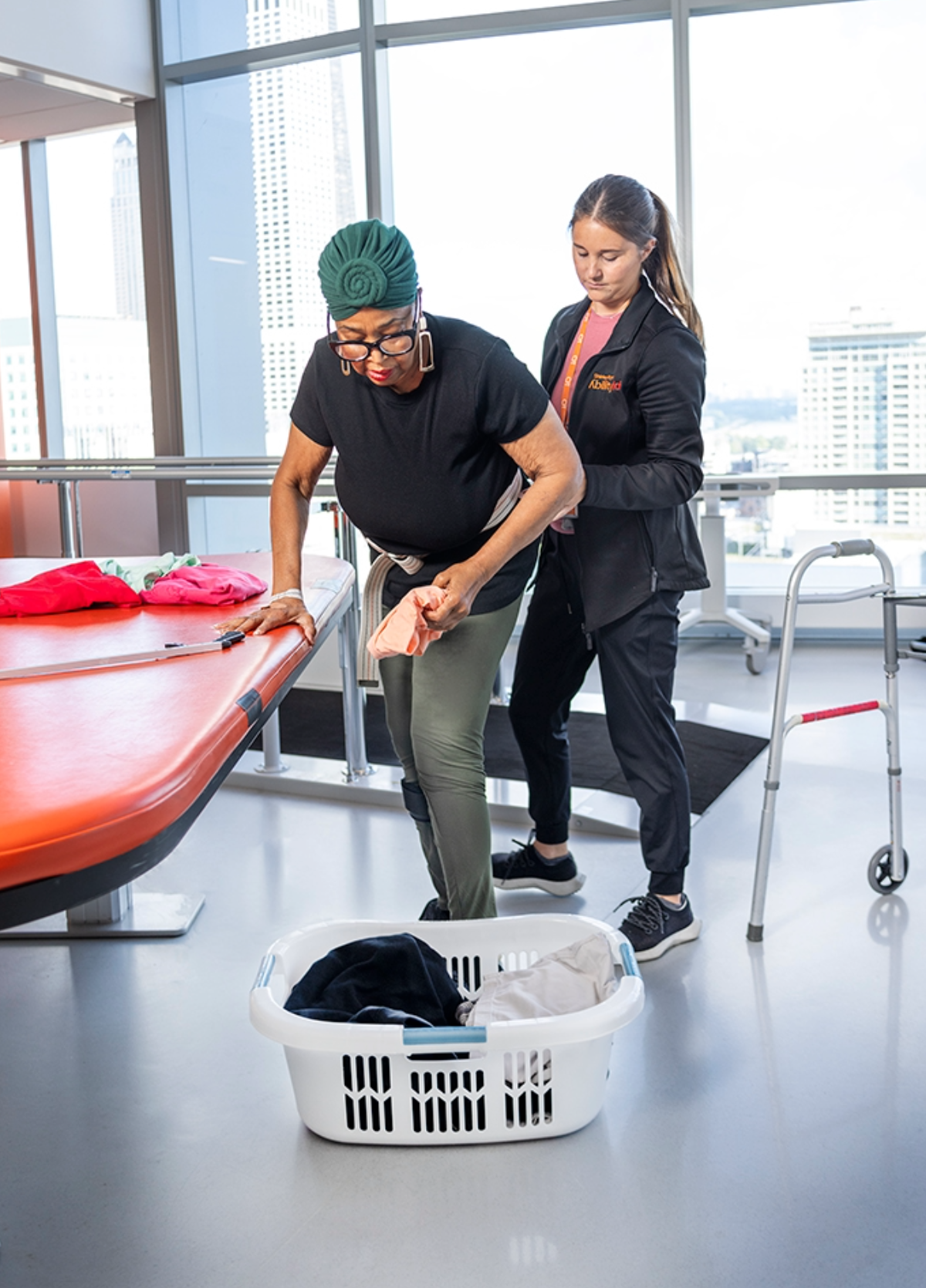Body
Whether patients are participating in therapy after an injury or illness, moving around a hospital or rehabilitation facility, or readjusting to life at home after hospitalization with the help of a caregiver — it’s likely they will use a special piece of equipment called a gait belt.
Though a gait belt might seem simple at first glance, this common and extremely helpful tool plays an important role in keeping individuals safe and supported as they make progress in their balance, strength, coordination and mobility.
What Exactly is a Gait Belt?
Body
A gait belt is a sturdy belt often made from canvas or nylon, secured snugly and comfortably with a buckle or clasp. It is worn around the waist or chest so a physical therapist (PT), occupational therapist (OT), nurse or caregiver can assist an individual who may have difficulty walking, standing or balancing.
It’s important to note that a gait belt isn’t meant to carry or lift someone like a harness. Rather, it’s a safety tool that helps reduce the risk of falls while allowing a patient to move.
How is a Gait Belt Used in Therapy?
Body
Therapists use gait belts with patients who can bear weight, but who otherwise may have trouble with balance, strength and/or endurance.
The therapist may hold the belt as the patient moves from sitting to standing, transitions between surfaces, takes steps or walks from one point to another — helping the patient to maintain balance and preventing sudden falls if the patient loses stability.
By using a gait belt, a clinician can observe a patient’s natural movement and provide corrections to improve gait, posture, body alignment and confidence with walking.

Who Benefits from Using a Gait Belt?
Body
Many different individuals can benefit from using a gait belt. For example, at Shirley Ryan AbilityLab, those in inpatient rehabilitation often participate in gait training to regain mobility after life-changing events such as a spinal cord injury, stroke or traumatic brain injury. Though they may not be able to walk independently due to impairments and after a prolonged stay in the hospital, through gait training — and assisted with a gait belt — patients can improve their mobility.
In addition to assisting with mobility, gait belts also can be used to help patients maintain sitting balance and to stand up, as well as to facilitate safe transfers (e.g., to the bed or bathroom) for those with muscle weakness or limited mobility.
These belts may also be used with those who are recovering in outpatient therapy after a joint replacement, other surgery, or a fall or fracture.

Finally, caregivers may use a gait belt to help their loved ones walk safely at home, such as going to and from the bathroom or while using stairs.
In any case, it’s a good idea to consult with a healthcare provider to ensure the gait belt is being used properly and safely as patients progress toward mobility — and independence — one step at a time.

